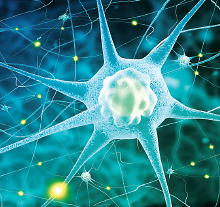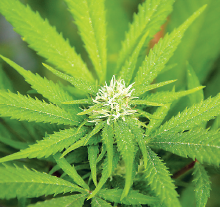Mindfulness-Based Cognitive Therapy May Reduce Relapse in MDD Patients
A meta-analysis published in JAMA Psychiatry suggests that mindfulness-based cognitive therapy (MBCT) may be just as or more effective in preventing or delaying relapse in patients with recurrent major depressive disorder (MDD) than other types of depression therapies, especially in individuals with pronounced residual symptoms.
MBCT combines the concepts of cognitive therapy with meditative practices and attitudes based on the cultivation of mindfulness.
For the study, an international team of researchers performed a systematic review of randomized trials published from November 2010 to November 2014. To meet inclusion, studies were required to have compared the effectiveness of MBCT with at least one non-MBCT treatment, such as antidepressant treatment and cognitive psychological education, to prevent symptom relapse in adults with recurrent MDD who were in full or partial remission.
The effectiveness of MBCT treatment was measured by the absence of relapse to depression within 60 weeks of follow-up, measured by the Structured Clinical Diagnostic Interview. The researchers also examined the impact of sociodemographic factors and psychiatric variables on MBCT effectiveness.
Nine trials met inclusion in the meta-analysis, with a total of 1,258 participants. Of the participants who received MBCT, 38 percent had a depressive relapse within the 60-week follow-up compared with 49 percent among those who did not receive MBCT. Results also showed MBCT to be more effective in people presenting greater depressive symptoms at baseline compared with those who did not. There was no statistical correlation between MBCT and age, sex, education, or relationship status.
In an accompanying editorial, Richard Davidson, Ph.D., founder of the Center for Healthy Minds at the University of Wisconsin-Madison, wrote that “the opportunity now is to examine in more detail which types of patients benefit most from MBCT, the mechanisms by which MBCT is producing its beneficial change, and how we can better measure the mediators of therapeutic change.”
Experimental Cancer Drug Shows Promise for Fragile X
An experimental drug called nutlin-3, currently being tested as a retinoblastoma treatment, may improve learning and memory associated with fragile X syndrome, according to an animal study published in Science Translational Medicine.
Fragile X syndrome, caused by mutations in the FMR1 gene, is the most common inherited cause of autism spectrum disorder.
In studying a mouse model of fragile X, researchers found that the mutations in FMR1 led to more activity of a protein called MDM2, which in turn led to greater proliferation of neural stem cells, but less differentiation into mature neurons. Instead, these mice produced more astrocytes, a type of cell that carries out several supporting functions in the brain.
Low doses of nutlin-3, which is an MDM2 inhibitor, helped correct this imbalance between astrocytes and neurons, and restored spatial memory and object recognition in the deficient mice.
The authors also found that nutlin-3 seemed to have no visible effects on already mature neurons.
People Withdrawing From Opioid Addiction May Abuse Imodium
People attempting to self-treat symptoms of opioid withdrawal may be at risk of abusing the over-the-counter antidiarrheal medication loperamide (marketed as Imodium), according to a case report in the Annals of the Emergency Medicine.
Loperamide, a μ-opioid agonist, has not been observed to have effects on the central nervous system similar to those of prescription painkillers or heroin when used at the recommended dose. However, the antidiarrheal drug may manifest these effects at doses that are at least 10 times higher than daily recommendations.
One patient had ingested a loperamide concentration of 77 ng/mL and another 144 ng/mL (the therapeutic range is 0.24 ng/mL to 3.1 ng/mL). Both cases resulted in overdose of loperamide, interaction with emergency medical services due to cardiovascular events, and ultimately death. (Although high doses of loperamide may increase risk of cardiovascular events, it was not confirmed that the patients died from loperamide-associated adverse cardiovascular events.)
From 2011 through 2014, national poison centers reported a 71 percent increase in calls related to intentional exposure to loperamide.
“Health care providers must be aware of increasing loperamide abuse and its underrecognized cardiac toxicity,” lead author William Eggleston, Pharm.D., of the Upstate New York Poison Center, said in a press release. “This is another reminder that all drugs, including those sold without a prescription, can be dangerous when not used as directed.”
Marijuana Use By Teens May Increase Risk of Paranoia, Hallucinations
Adolescents who regularly use marijuana may be more likely to experience subclinical paranoia and hallucinations, even after sustained abstinence from the drug, according to a study in AJP in Advance.
Researchers from the University of Pittsburgh Medical Center and Arizona State University, Phoenix, analyzed data from a sample of 1,009 adolescent boys from Pittsburgh who self-reported annually on the number of days they used marijuana in the past year and experiences of subclinical psychotic symptoms (for example, feelings of paranoia, hallucinations, or bizarre thinking) from age 13 to 18. The teens also annually reported on the number of days they used alcohol, tobacco, and other illicit drugs.
As expected, substance use increased from age 13 to 18. By the last assessment, 270 participants reported having used marijuana weekly, 325 had used alcohol weekly, 377 had used tobacco daily, and 134 had used other illicit drugs at least once. For each year the participants engaged in weekly marijuana use, their expected level of subsequent subclinical psychotic symptoms rose by 21 percent, and their expected odds of experiencing subsequent subclinical paranoia or hallucinations rose by 133 percent and 92 percent, respectively.
Additional analysis revealed that even when adolescents stopped using marijuana for one year, the effect of prior weekly marijuana use on total subclinical psychotic symptoms, paranoia, and hallucinations persisted. For each additional year adolescents engaged in weekly marijuana use, their expected number of total subclinical psychotic symptoms rose by 29 percent during subsequent periods of yearlong abstinence, and their expected odds of experiencing paranoia and hallucinations rose by 112 percent and 158 percent, respectively.
“[T]he most concerning finding is that the effect of prior weekly marijuana use persists even after adolescents have stopped using for one year,” the researchers wrote. ■




